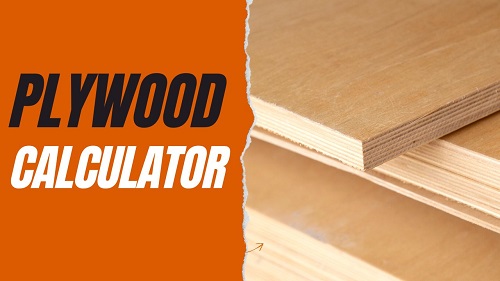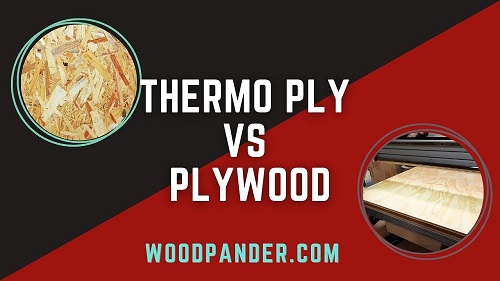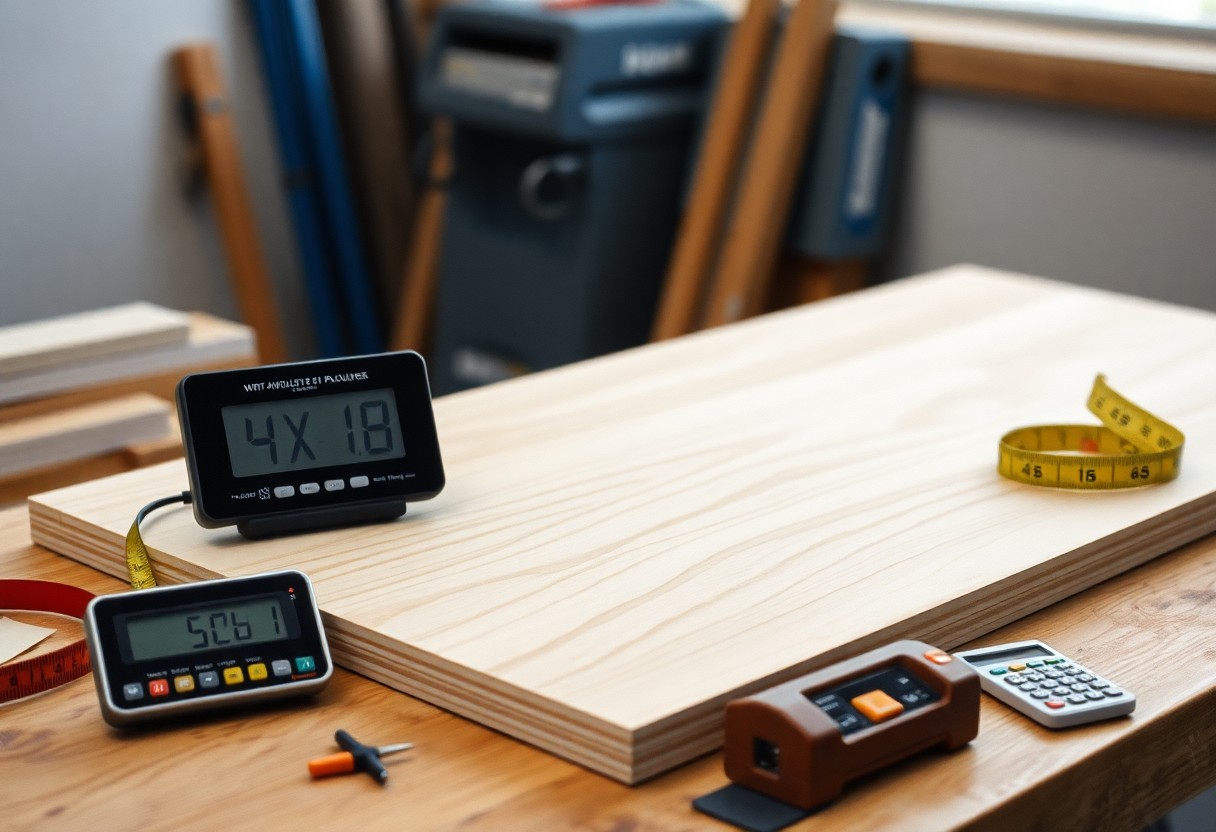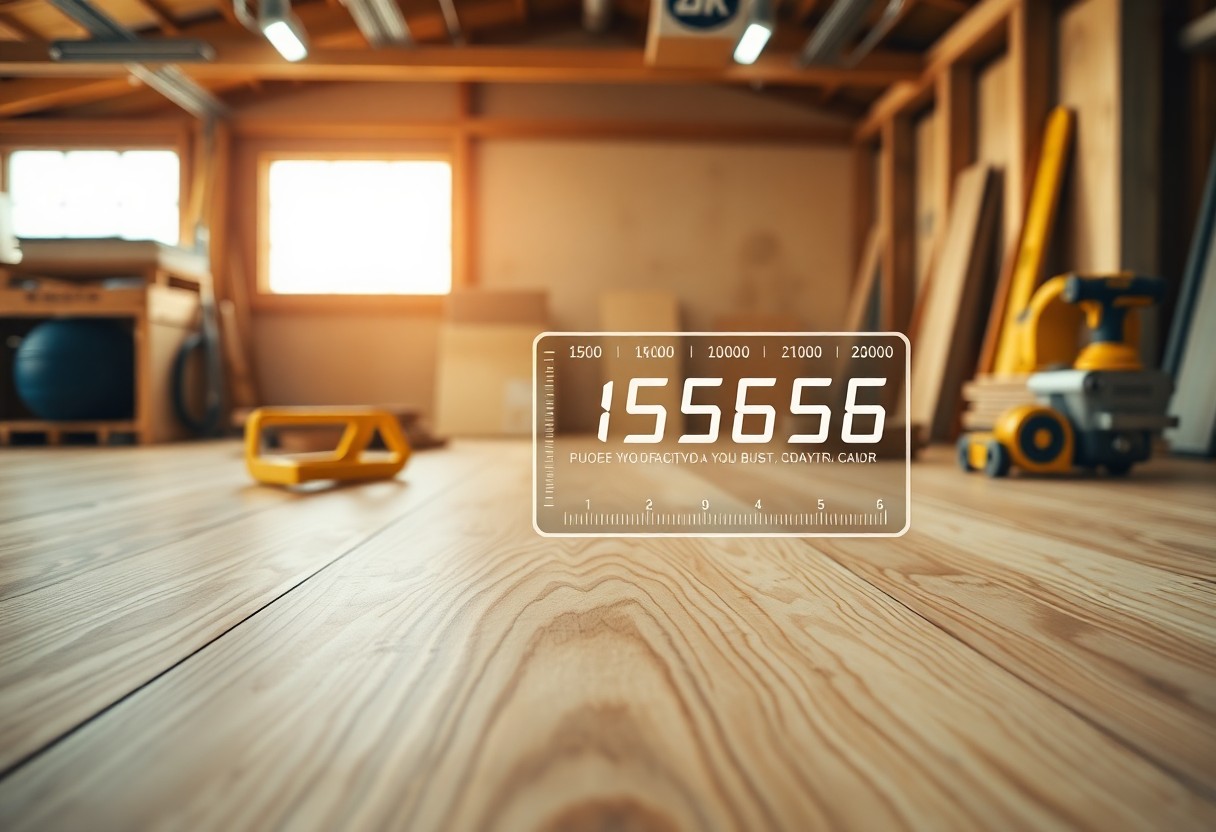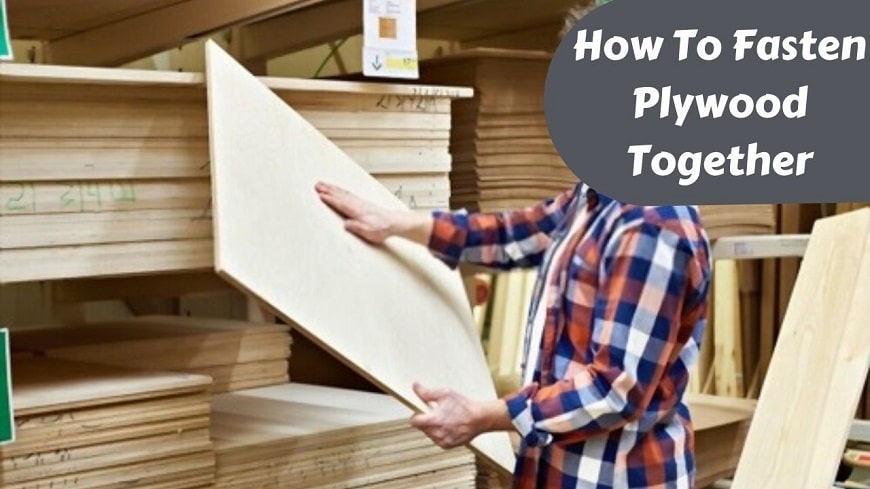Plywood is a staple in construction and woodworking projects, but not all plywood is created equal. There are many different types of plywood available, with varying qualities and purposes.
Two commonly used types of plywood are BCX and ACX plywood. While they may seem similar on the surface, there are important differences between the two that should be understood before selecting which one to use for your project.
BCX plywood is water-resistant and suitable for exterior applications, while ACX plywood offers enhanced moisture resistance and durability, making it a preferred choice for outdoor projects.
BCX vs ACX Plywood
| Feature | BCX Plywood | ACX Plywood |
|---|---|---|
| Appearance | One smooth, one textured surface | Both surfaces smooth and sanded |
| Durability | Less durable than ACX | More durable than BCX |
| Strength | Less strong than ACX | Stronger than BCX |
| Water resistance | Less resistant than ACX | More resistant than BCX |
| Price | Less expensive than ACX | More expensive than BCX |
| Common uses | Furniture, interior walls, and subflooring | Cabinetry, furniture, and exterior applications |
One of our articles –BC Plywood vs CDX.
Explanation of BCX and ACX Plywood
BCX and ACX refer to different grades of exterior plywood. Both types have a softwood core made from pine or fir trees, with thin veneer layers on both sides that are glued together under high pressure. The letters in each grade refer to the quality of those veneer layers.
In BCX plywood, the B stands for one face being a B grade veneer while the C indicates that the other face is a C grade veneer. The X means that both faces have been sanded smooth before being finished with an overlay such as paint or stain.
In ACX plywood, the A refers to both faces having an A grade veneer while the C denotes that one side has a C grade veneer. Like BCX, X indicates sanded smooth surfaces ready for finishing.
Knowing how these two types of exterior-grade plywoods differ can mean achieving your desired results or having your project fail quickly due to using an inappropriate product for your application.
By understanding their characteristics – from strength and durability to cost – you can select which product will work best based on aesthetics as well as function needed in any given situation.
What is BCX Plywood?
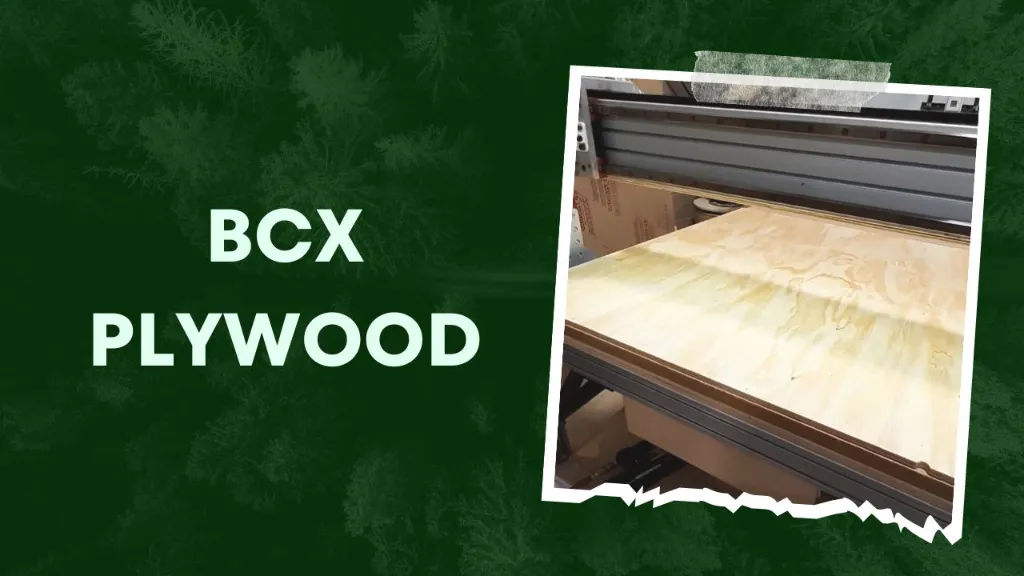
BCX plywood is a high-quality type of plywood that is made from layers of birch and pine veneer. The letters B, C, and X refer to the quality of the faces and back of the plywood.
The B-grade face is smooth and free of knots, while the C-grade face may have some small knots or imperfections. The X-grade back is rougher but still functional.
Definition and Composition
BCX plywood has a composition that makes it ideal for outdoor use, as it is made with waterproof glue that will not break down in harsh weather conditions.
The grain of the veneers runs in opposite directions on each layer, which helps to prevent warping, twisting, or splitting.
This type of plywood typically comes in 4-foot by 8-foot sheets that are available in different thicknesses.
Advantages of using BCX Plywood
One major advantage to using BCX plywood is its durability. It can withstand moisture and exposure to the elements without degrading or rotting away over time.
Additionally, this type of plywood holds up well against wear-and-tear from foot traffic or heavy machinery. It also has good insulation properties compared to other types of wood products.
Common uses for BCX Plywood
BCX plywood can be used for a variety of outdoor construction projects such as building decks or sheds due to its moisture resistance properties.
It’s also a popular choice for siding on homes as well as for creating strong foundation pieces like posts because it holds nails better than other types of wood products.
In short, if you’re looking for durable material that can withstand harsh weather conditions while still maintaining its strength over time then BCX Plywood might just be what you need!
One of our articles –Asphalt Impregnated Board vs Plywood.
What is ACX Plywood?

When it comes to building materials, plywood is one of the most versatile and commonly used. ACX plywood specifically stands out for its quality and strength. The term ACX refers to the grade of the plywood and how it is constructed.
The “A” side of the plywood has no knots or defects, while the “C” side can have some knots but nothing too significant. The “X” describes how it is bonded together with exterior glue.
Definition and Composition
ACX plywood is created by layering thin sheets of wood together with a strong adhesive in between.
These layers are then pressed together under high pressure, creating a strong and durable material that can withstand extreme weather conditions. This type of plywood typically has a thickness range of 1/4 inch to 1 inch.
Advantages of Using ACX Plywood
One major advantage of ACX plywood is its strength and durability. It can withstand harsh weather conditions without deteriorating or losing its shape, making it ideal for outdoor projects such as decking or roofing.
Another advantage is its versatility in terms of finishing options. The smooth A side makes it easy to paint or stain for a professional look that will last for years to come.
Common Uses for ACX Plywood
ACX plywood can be used in a range of projects from home renovations to commercial construction projects. Its strength and durability make it perfect for roofing, exterior walls, outdoor furniture, playground equipment, fences or decks.
In addition, many DIY-ers use ACX plywood for indoor furniture such as bookshelves or dressers because it has an attractive appearance even when left bare without any finish applied.
Overall, ACX plywoods’ versatile nature combined with its durability make it an excellent choice for numerous applications where high-quality materials are desired.
One of our articles –Thermo Ply vs Plywood.
Differences between BCX and ACX Plywood
Appearance and Grading Standards
BCX plywood has a rougher surface than ACX plywood due to the lower grade of the outer veneers.
BCX is graded with letters that denote the quality of the veneer on each side – B being a higher quality than C.
In contrast, ACX plywood is graded with letters A and C, where A denotes a very high-quality veneer on one side and C denotes an acceptable quality on the other. This grading system reflects the fact that ACX is meant to be used in applications where appearance matters, such as cabinets or furniture.
Strength and Durability
When it comes to strength and durability, both types of plywood are sturdy choices for construction projects. However, BCX is typically considered slightly stronger due to its thicker inner core layers.
It’s also more resistant to warping thanks to its construction which includes multiple layers that alternate grain direction. In contrast, ACX plywood is not quite as thick as BCX but its high-quality outer layers make it more resistant to water damage over time.
Cost Comparison
The cost difference between BCX and ACX plywood can vary depending on availability in your local market. Generally speaking, BCX tends to be less expensive than ACX due to it being made with lower-grade outer veneers. However, this does not mean that one type of plywood is inherently better or worse than the other – ultimately your choice should depend on your specific needs for your project.
Overall, when choosing between BCX and ACX plywood you will need to consider factors such as appearance requirements versus strength needs versus budget constraints.
It’s important to know what each type offers so you can make an informed decision for your project that meets all of these criteria while also providing long-term value in durability and performance.
When to Use BCX vs ACX Plywood
Choosing between BCX and ACX plywood will depend on the specific needs of your project. Both types of plywood have distinct advantages, and understanding the differences between them can help you make an informed decision. One important factor to consider is the appearance of the plywood.
If your project requires a smooth, consistent surface that will be visible, ACX plywood may be the better choice. This type of plywood is graded for its appearance and is often used in furniture making or other applications where aesthetics are important.
On the other hand, if the plywood will not be visible or if a rougher texture is acceptable, BCX may be a more cost-effective option. Another factor to consider is strength and durability.
If your project requires structural support or will be exposed to harsh weather conditions, such as in outdoor construction projects, ACX plywood may be a better choice due to its higher quality veneers and superior bonding properties. However, if you are working on an indoor project that does not require as much strength or durability, BCX may be sufficient while also being more affordable.
Factors to Consider When Choosing Between The Two Types
Besides aesthetics and strength/durability requirements for your project as mentioned above, some other factors come into play when deciding between BCX and ACX plywood: 1) Price: While both types have their advantages but there might a significant difference in pricing between these two types based on their unique composition qualities.
2) Availability: Depending on where you live or what home improvement store you have access to near you could make one type more readily available than another. 3) Sustainability: Knowing how sustainable each type of plywood is could also affect which one you choose for your project.
4) Intended use: Knowing what purpose you’re going to put either one too can help point out which one is better to use than the other. Consider these factors when deciding which type of plywood to choose for your project.
Specific Project Examples Where One Type May Be Preferred Over The Other
Both BCX and ACX plywood have a wide range of applications, but there are certain projects where one type may be preferred over the other. Here are a few examples:
– Construction of outdoor structures such as sheds, decks, or fences may require ACX plywood due to its superior durability and resistance to warping, rotting, and decay. – Indoor projects such as cabinets, furniture or decorative wall paneling may benefit from the smoother surface appearance provided by ACX plywood.
– If you’re working on a tight budget for your project with minimal weather exposure or structural support needed, then BCX Plywood is an excellent choice. Always consider what properties are essential to the success of your project when choosing between BCX and ACX plywood.
Related Questions
Is bcx plywood waterproof?
No, BCX plywood is not inherently waterproof, but it does have some water-resistant properties.
Is bcx plywood exterior grade?
BCX plywood is commonly used for exterior applications due to its durability and ability to withstand weather conditions.
Is acx plywood waterproof?
ACX plywood is not completely waterproof, but it has better water-resistant properties compared to BCX plywood.
Is acx plywood exterior grade?
ACX plywood is commonly used for exterior projects as it offers enhanced moisture resistance and durability for outdoor applications.
What does BCX plywood stand for?
BCX plywood stands for a hardwood veneer face, a softwood veneer core, and a softwood veneer back. The "X" indicates that it's an exterior-grade plywood.
What does ACX plywood stand for?
ACX plywood stands for an A-grade hardwood veneer face, a softwood veneer core, and a C-grade softwood veneer back. The "X" indicates that it's an exterior-grade plywood.
Which is more expensive, BCX or ACX plywood?
ACX plywood is generally more expensive than BCX plywood due to the higher quality of its face veneer.
Can BCX plywood be used for outdoor applications?
Yes, BCX plywood is an exterior-grade plywood and can be used for outdoor applications.
Can ACX plywood be used for indoor applications?
Yes, ACX plywood can be used for indoor applications, but it's often used in applications where appearance is essential, such as furniture making.
Acx Plywood Vs Birch, Which One Is Better?
Both ACX plywood and birch plywood have their advantages depending on the intended use. ACX plywood is typically more affordable and suitable for outdoor applications, while birch plywood offers superior strength and aesthetics, making it preferable for furniture and high-end cabinetry.
Difference Between Acx Vs Ccx Plywood?
ACX plywood typically has one smooth side and one rough side, suitable for exterior use, while CCX plywood has both sides finished and is primarily designed for interior applications.
Is ACX plywood good for cabinets?
Yes, ACX plywood can be suitable for cabinets due to its smooth surface and strength, but its quality and suitability depend on specific project requirements and preferences.
What are the 5 grades of plywood?
The five grades of plywood are A, B, C, D, and X. These grades denote the quality and appearance of the plywood sheets, with A being the highest quality and X indicating special order or non-standard grades.
Conclusion
When it comes to BCX vs ACX plywood, both types have their unique features and benefits. BCX plywood is less expensive and more widely available, while ACX plywood offers a higher quality face veneer and better durability. Choosing the right one depends on your specific needs and budget.


